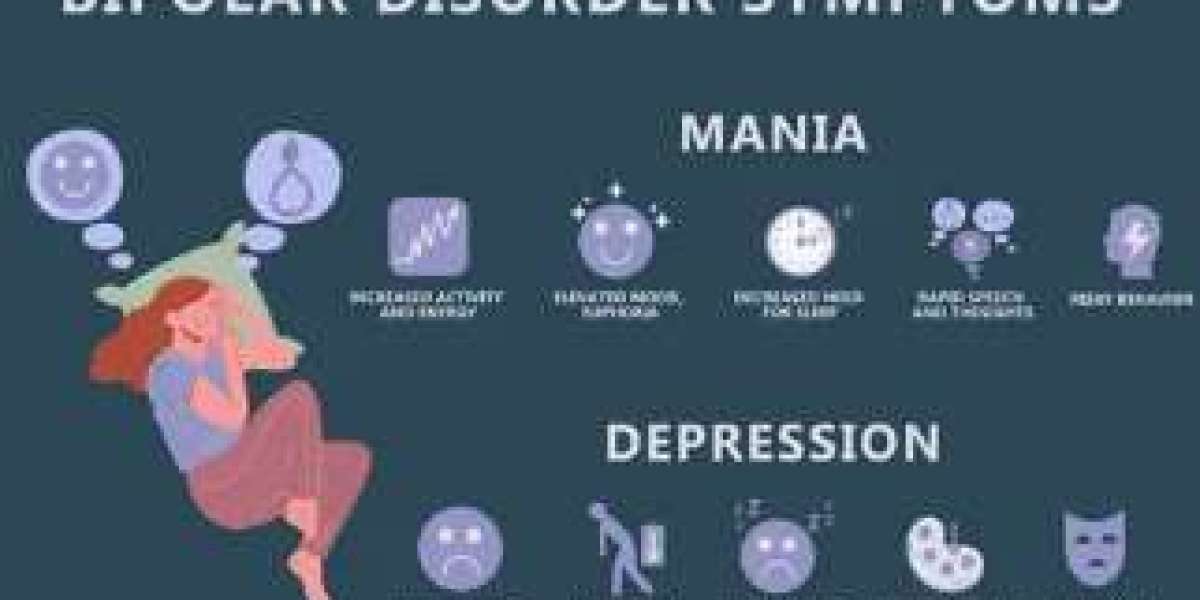Bipolar disorder is a complex mental health condition that affects millions of people worldwide. Characterized by extreme mood swings, this disorder can significantly impact daily life, relationships, and overall well-being. Understanding bipolar disorder is essential for early diagnosis, effective treatment, and supportive care. In this article, we will explore the symptoms, causes, types, and treatment options for bipolar disorder, as well as coping strategies and resources for those affected.
What is Bipolar Disorder?
Bipolar disorder, formerly known as manic-depressive illness, is a mental health condition that causes unusual shifts in mood, energy, activity levels, and the ability to carry out day-to-day tasks. People with bipolar disorder experience episodes of mania or hypomania (abnormally elevated mood) and depression (persistent low mood). These mood swings are more severe than typical emotional ups and downs and can interfere with a person’s quality of life.
Unlike normal mood changes, bipolar disorder mood episodes are intense, long-lasting, and may occur without any apparent reason. The disorder affects approximately 2.8% of adults in the United States, but it is often underdiagnosed due to the variability of symptoms and overlap with other mental health conditions.
Types of Bipolar Disorder
Bipolar disorder is classified into several types, each with distinct patterns of mood episodes:
- Bipolar I Disorder: This type involves at least one manic episode, often followed by depressive episodes. Manic episodes are severe and may require hospitalization due to risky behaviors or psychotic symptoms.
- Bipolar II Disorder: Individuals with Bipolar II experience hypomanic episodes—less severe than full mania—along with major depressive episodes. The depressive episodes in Bipolar II are often more frequent and debilitating than in Bipolar I.
- Cyclothymic Disorder (Cyclothymia): This milder form of bipolar disorder involves chronic mood fluctuations with periods of hypomania and mild depression. Symptoms are less severe but can still interfere with daily life.
- Other Specified and Unspecified Bipolar Disorders: These categories include symptoms that do not fit neatly into the classifications above but still represent significant mood disturbances.
Symptoms of Bipolar Disorder
The symptoms of bipolar disorder vary depending on the type and the phase of the mood episode. They generally fall into two categories: manic/hypomanic and depressive episodes.
Manic or Hypomanic Episodes
During a manic or hypomanic episode, a person may experience:
- Elevated or irritable mood
- Increased energy and activity levels
- Reduced need for sleep
- Racing thoughts and rapid speech
- Inflated self-esteem or grandiosity
- Impulsive or risky behaviors, such as spending sprees or reckless driving
- Poor decision-making
Manic episodes in Bipolar I are typically more severe, while hypomanic episodes in Bipolar II are less intense and may even go unnoticed by others.
Depressive Episodes
Depressive episodes in bipolar disorder resemble symptoms of major depression and may include:
- Persistent sadness or emptiness
- Loss of interest in activities once enjoyed
- Fatigue or low energy
- Difficulty concentrating or making decisions
- Changes in sleep patterns (insomnia or oversleeping)
- Changes in appetite or weight
- Feelings of hopelessness or worthlessness
- Thoughts of self-harm or suicide
These episodes can last for weeks or even months and may severely affect personal, professional, and social functioning.
Causes and Risk Factors
The exact cause of bipolar disorder is unknown, but research suggests a combination of genetic, biological, and environmental factors play a role.
- Genetics: Bipolar disorder tends to run in families, indicating a hereditary component. Having a close relative with bipolar disorder increases one’s risk of developing the condition.
- Biological Differences: Brain imaging studies show structural and functional differences in the brains of people with bipolar disorder, particularly in areas that regulate mood and emotion.
- Neurochemical Imbalances: Irregularities in neurotransmitters—chemical messengers like serotonin, dopamine, and norepinephrine—may contribute to mood instability.
- Environmental Stressors: Trauma, major life changes, substance abuse, and chronic stress can trigger or exacerbate bipolar episodes.
Diagnosis of Bipolar Disorder
Diagnosing bipolar disorder requires a thorough evaluation by a qualified mental health professional, such as a psychiatrist or psychologist. Diagnosis typically involves:
- Detailed medical and psychiatric history
- Interviews about symptoms, mood patterns, and family history
- Use of standardized assessment tools and questionnaires
- Observation of behavior over time
Diagnosis can be challenging, particularly if depressive episodes occur before manic or hypomanic episodes. Misdiagnosis with depression, anxiety, or ADHD is common, which is why early evaluation is crucial.
Treatment Options
Bipolar disorder is a lifelong condition, but effective treatment can help manage symptoms and improve quality of life. Treatment typically involves a combination of medication, therapy, and lifestyle strategies.
Medications
Common medications for bipolar disorder include:
- Mood Stabilizers: Lithium is one of the most widely used mood stabilizers to prevent manic and depressive episodes.
- Anticonvulsants: Medications like valproate and lamotrigine help stabilize mood.
- Antipsychotics: Atypical antipsychotics, such as quetiapine or olanzapine, may be used during manic or mixed episodes.
- Antidepressants: Sometimes prescribed during depressive episodes but usually combined with a mood stabilizer to prevent triggering mania.
Medication management is individualized, and it may take time to find the right combination and dosage.
Psychotherapy
Therapy can help individuals understand their condition, develop coping skills, and manage stress. Effective therapy options include:
- Cognitive Behavioral Therapy (CBT): Helps identify negative thought patterns and develop healthier coping strategies.
- Interpersonal and Social Rhythm Therapy (IPSRT): Focuses on maintaining routines and stable sleep patterns to prevent mood episodes.
- Family-Focused Therapy: Involves family members to improve communication, reduce conflict, and provide support.
Lifestyle and Self-Care
Healthy lifestyle habits can complement professional treatment:
- Maintain a consistent sleep schedule
- Engage in regular physical activity
- Avoid alcohol and recreational drugs
- Monitor mood changes and triggers
- Develop a strong support system
Coping and Support
Living with bipolar disorder can be challenging, but many people lead fulfilling lives with proper treatment and support. Support groups, mental health organizations, and online communities can provide valuable resources and a sense of connection. Educating family and friends about bipolar disorder can also foster understanding and reduce stigma.
Conclusion
Bipolar disorder is a serious mental health condition that requires awareness, understanding, and treatment. Recognizing symptoms early, seeking professional help, and adhering to treatment plans can significantly improve outcomes. While living with bipolar disorder presents challenges, with proper care and support, individuals can manage mood swings, maintain healthy relationships, and lead productive, meaningful lives.
If you or a loved one may be experiencing symptoms of bipolar disorder, it is essential to reach out to a qualified mental health professional. Early intervention and ongoing support are key to managing this condition effectively.








